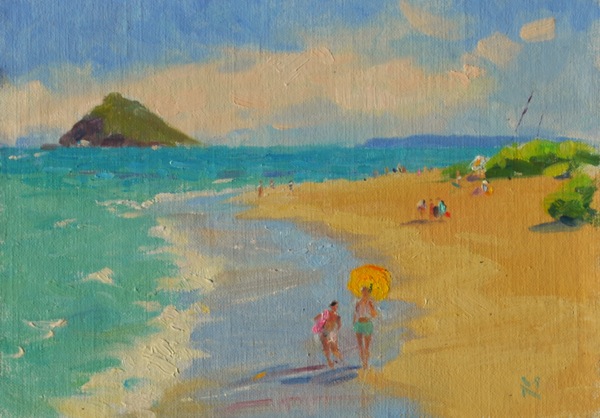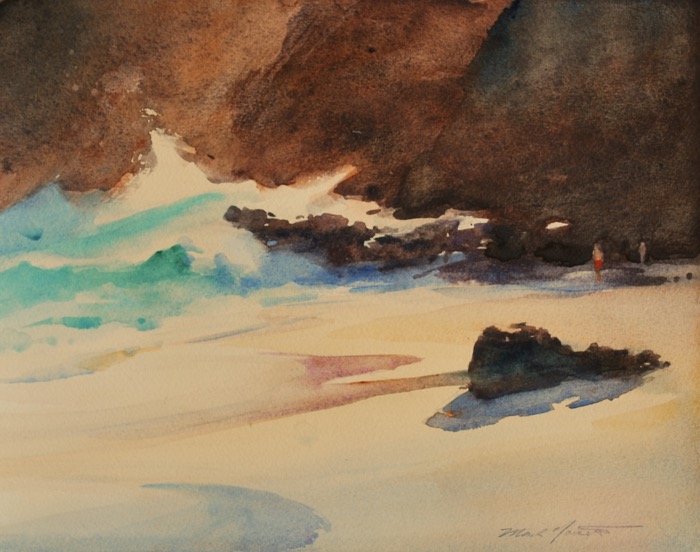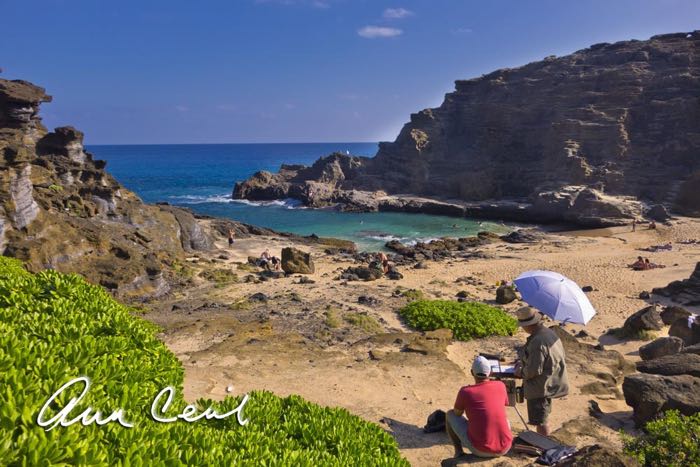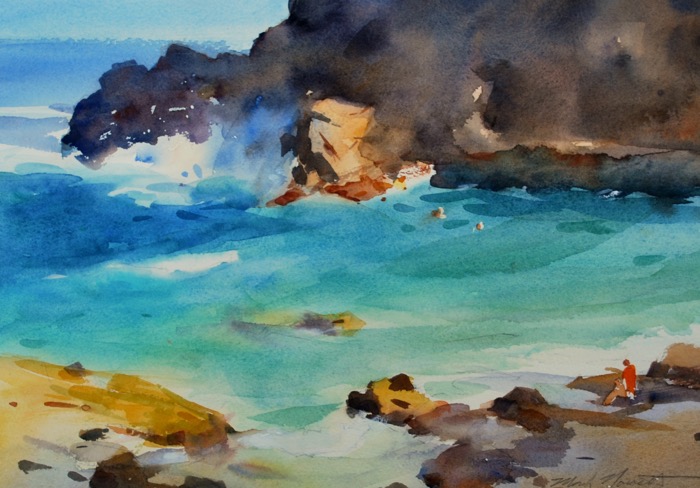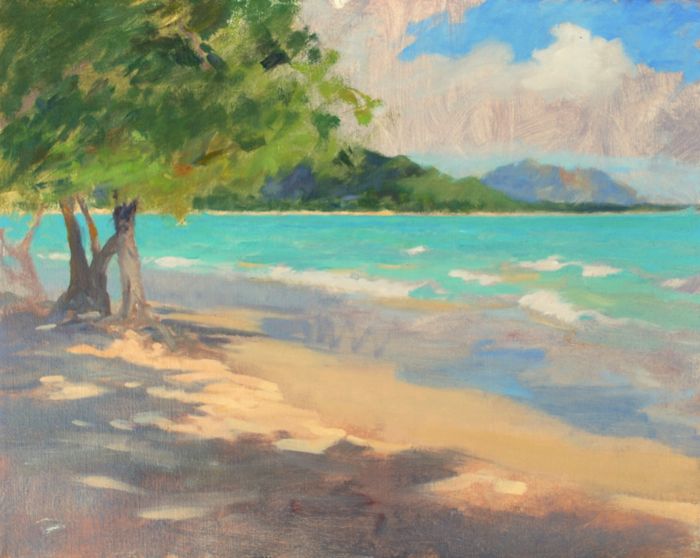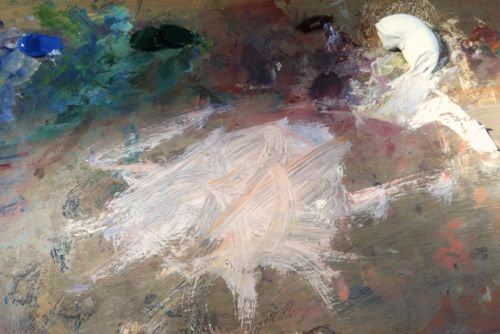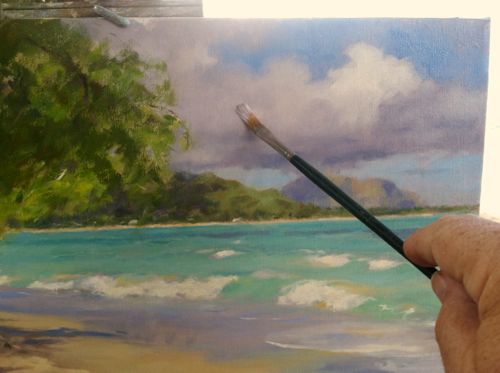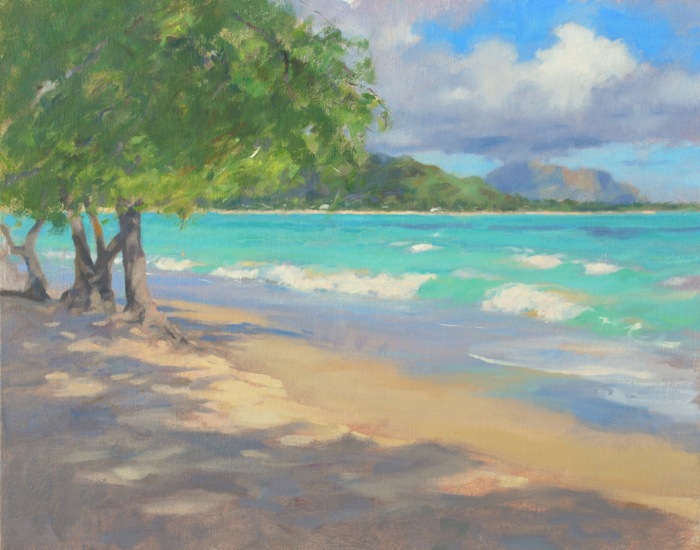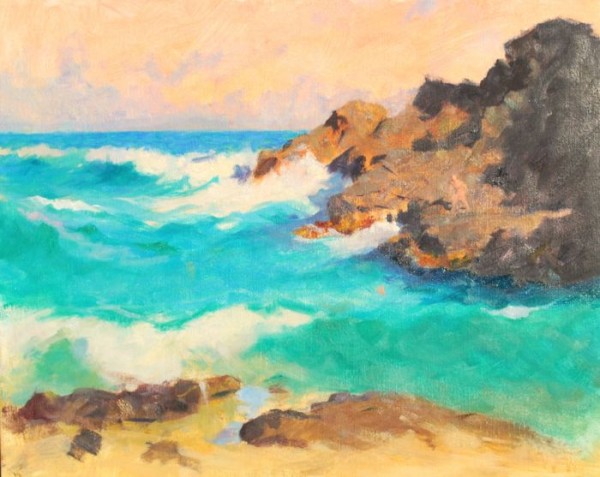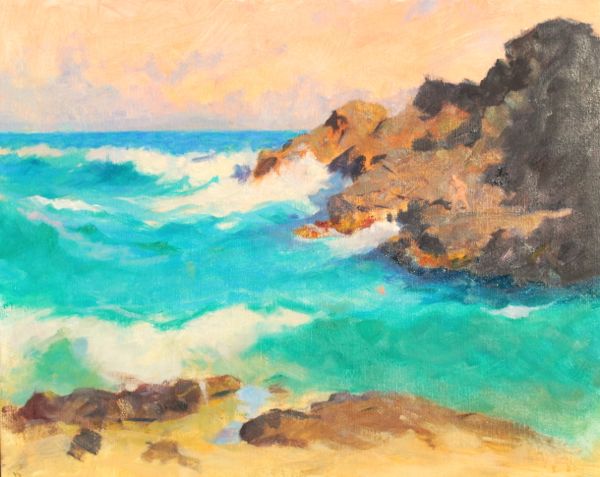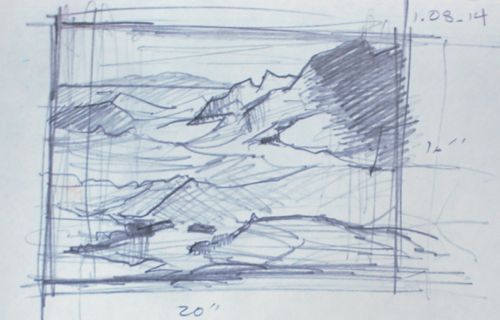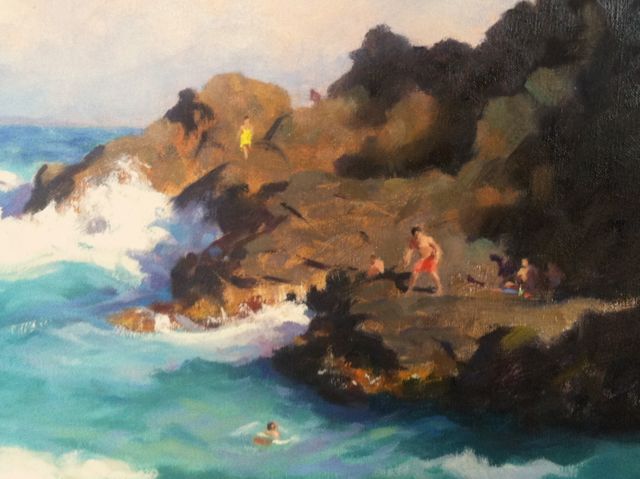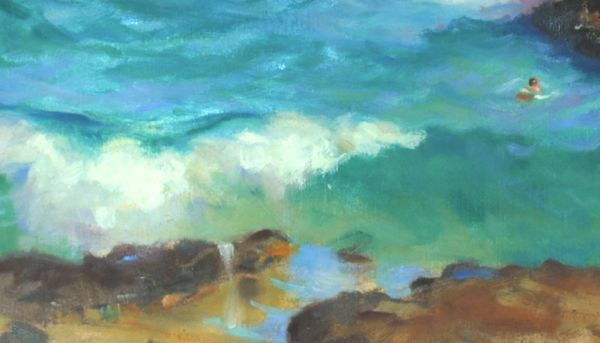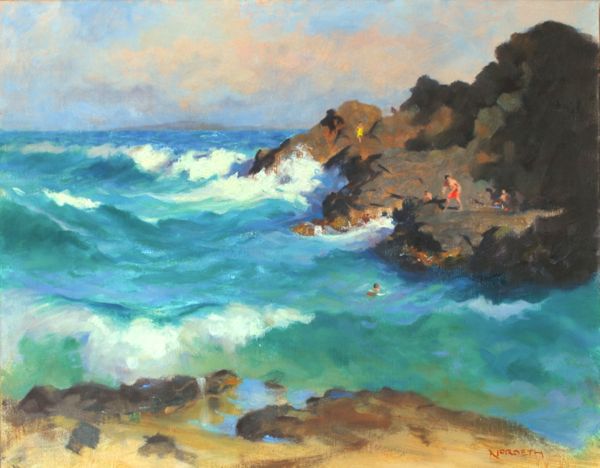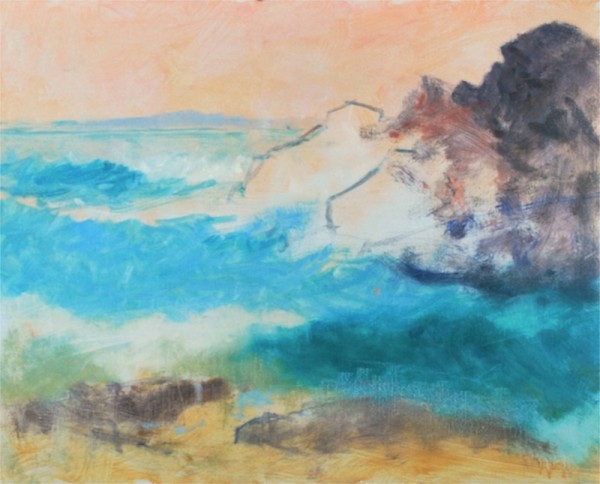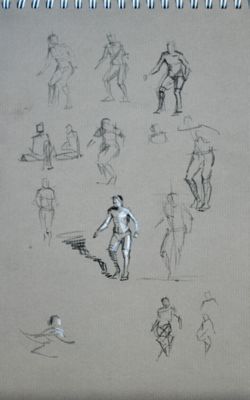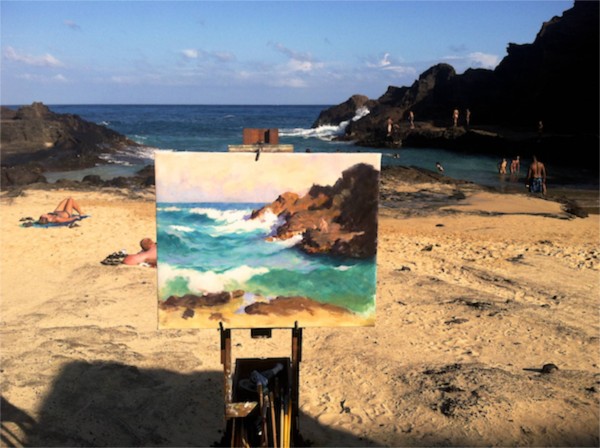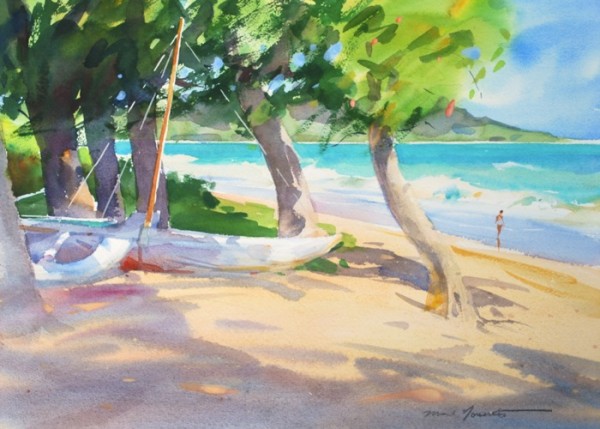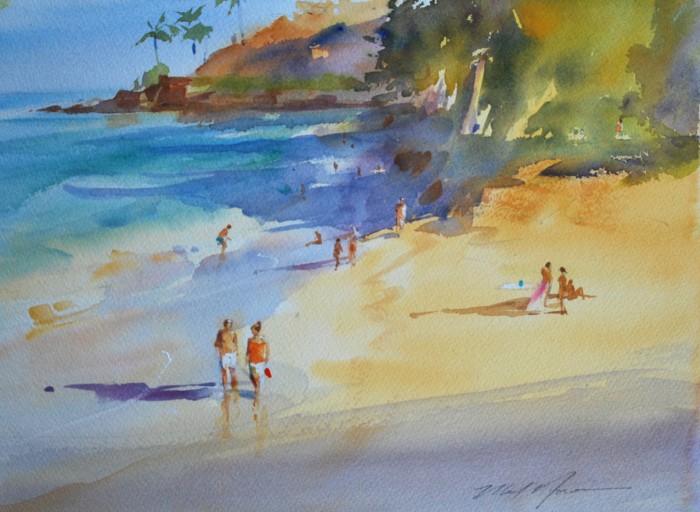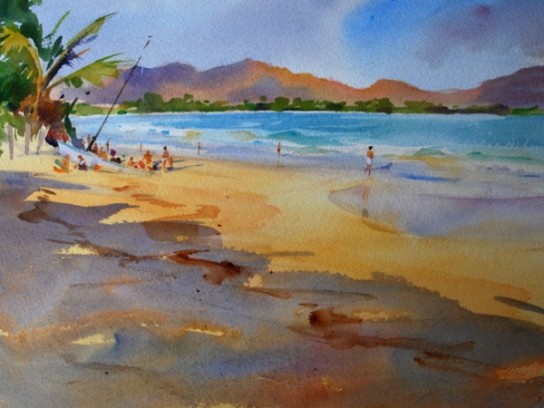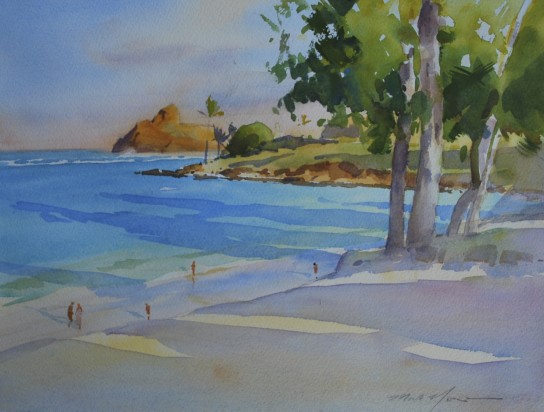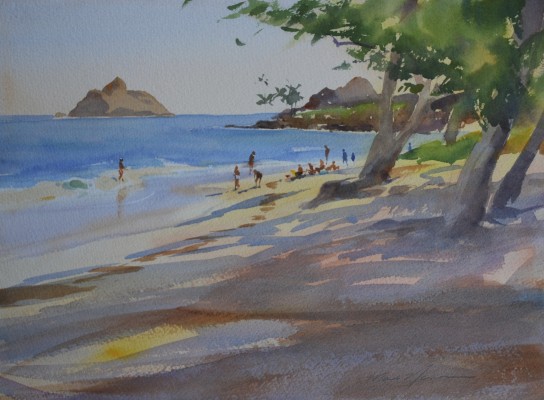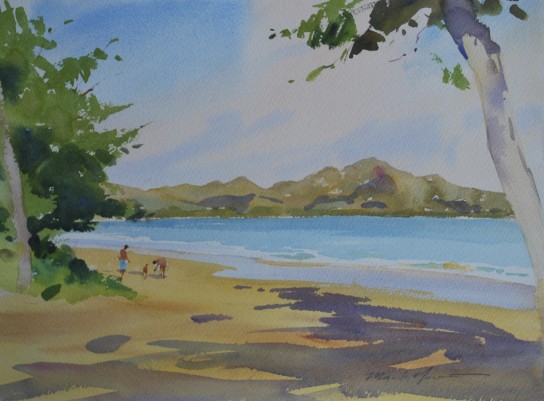It seems that this time of year I regularly find myself scouting for interesting subject matter in Lanikai, a beach spot not far from home. I begin early and drive the main road past Kailua Beach which then rises to the splendid overlook. I slow down to glance North, across the bay towards Mokapu, and then bend around to follow the one-way loop into the community of Lanikai.
Lanikai, like most other now-famous beaches, was once an isolated and rather barren spot populated by families of Hawai’ian and Asian descent. I’ve heard folks who lived here during the 1930’s speak about how farmers raised melons to trade for rice with farmers back in the mountains. Cash money was rare. Fresh water could come from holes dug in the sand, there was no electricity, and people birthed their babies at home. During the war, barbed wire was stretched along the beach.
Nowadays Lanikai is known, and it’s a different deal. Populated by part-timers and foreign visitors as well as locals, it’s become increasingly affluent and crowded. Sniffy, expensive California styled residences are on the rise and crowding the view. But there still are tiny slices of the old tucked away in corners and unexpected places, and it’s to these that I’m attracted.
Scouring and squinting, I often think that I must appear suspicious to residents as I slowly creep along in my chang-a-lang Rav 4, peering into yards and empty lots. I’m checking my rear view mirror for a view of how things appear behind me. I climb out of my car at odd intervals to study combinations of buildings and flora, dark and light patterns, or spots of color…anything that might hold some promise of becoming an interesting composition.
And so as I went ’round the loop (it’s a single lane, one road in and one road out), I was able gradually to narrow my search to a few possibilities. Though it was early in the day yet, the sunlight was strong and the sky clear. Streets were already filling with people hitting the beach or doing the holiday yard sales.
Then, out of the corner of my eye, I caught a glimpse of something good. Dark and light foliage, a flash of white wall/blue sea on the Makai (ocean) side of the street. It was a small beachfront property I’d somehow never noticed before. Big modern places had been built closely on either side. Yellow sunlight cut across the darkened entry road and there were hints of ’20’s-era architecture silhouetted in the dark overgrowth of palms and hedges.
A Friend Indeed
“No way I am going to get to do this”, I told myself as I skeptically considered the odds of obtaining permission to paint here. It’s no fun knocking on doors and explaining to people you’re a painter. Try it if you haven’t. And Lanikai has it’s guard up these days… understandably so. The normally friendly residents have already been tested by the abundant supply of tourists errantly drifting through their yards, as well as out-and-out thieves.
But I was about to be surprised. As I poked around across the street looking for a vantage point that might allow a shot at this, I saw a big contractor’s truck parked where I hadn’t noticed it on the lot. And the name on the truck was the company that my pal Brian builds for.
What do you know about that?
And as I’m taking all this in, my feet have me automatically walking across the street. Hope is like that, I’ve noticed. Your body just responds to it before your brain has weighed the matter entirely. But no matter, because at that moment my friend Brian has emerged from a dark doorway, his mind on 20 different things to do with his project. He then sees me, looking dumbfounded at him. What are the odds of this? We greet each other.
Yes, Mark, you can have the run of the place if you stay safely out of the way.

Well, I’ve gone from mild despair to elation in a few minutes. I thank Brian ( I’m STILL thanking him!), grab my trusty & rusty Julian 1/2 box, and after some deliberation regarding what to paint ( so many choices and so little time) I decide to jump on a rare opportunity to paint the beach from about 15 feet above it. Looking East, from this incredibly well shaded perch, Molokai is beautifully silhouetted and the sky and sea are dazzling. Visitors are walking the beach and the colors are beautiful. Everything is moving, and it is as strikingly clear as one could ever ask for.
Straight Paint
Unlike many oil painters, I received a lot of practice working with oil paint that is straight from the tube. This is a hard sell to some painters because we mostly receive the idea that things have to be done to oil paint, added to it, to make it manageable . While this is desirable in some instances, it’s not necessary in many cases…and certainly not in this case. I’d been working with an addition of some linseed oil lately, and also using a traditional 3 part medium for a change after years of straight paint. On this occasion I left the turpentine (Gamsol actually) at home, and worked with straight paint on a white oil primed linen panel. I’m happy I did.
It was delicious. Starting with the large masses of sand, sea, and sky I dropped in the large blocks of color with “tiles”, brush strokes of pure paint laid side to side, each mixed to directly capture the color and value needed. They can be fused and modeled later. This was referred to as “Bunkering” for the 19th century American painter Dennis Bunker by one of my teachers, James Childs. It’s work at the beginning, especially if one is accustomed to beginning with a thin wash of color that hides the white of the canvas. But the pay off comes later, because once the painting is covered, the second round of adjusting the shapes and values in this rich lay-in is a real pleasure. The right amount of paint is in place to model forms and the work almost becomes easier…certainly for me more enjoyable.
And so the morning went….figures briefly appeared that were desirable, though fleeting. The woman with the umbrella was only present for a minute at most…so I have developed the habit of notating the figure on a clean area of my palette, a quick gesture with color, enouch to recall the effect and place it into the painting wet into wet after the general effects of the painting are painted. Her companion was added from a memory sketch the following day.
